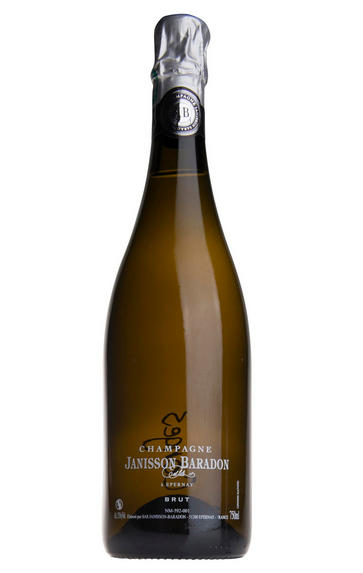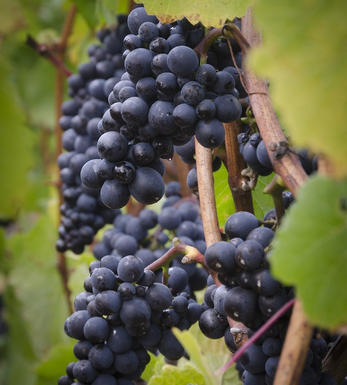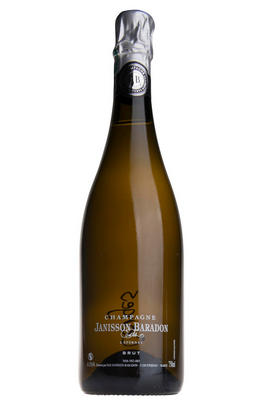
Critics reviews
Fermented in 100% oak (5-10 years old), no malolactic, 5 g/l dosage. 100% Pinot Meunier and named for the vineyard site planted in 1960.
Jancis Robinson - jancisrobinson.com - April 2013
About this WINE

Champagne Janisson Baradon
The latest addition to our artisan champagne offering is Janisson-Baradon, a small grower from the Montagne de Reims established in 1922 by George Baradon (a remueur) and his son-in-law (a cooper).
Five generations later, and now directed by Richard Janisson, and his sons Maxence (principal winemaker) and Cyril Janisson, they have 9ha of vineyards which encircle Epernay (Champagne’s capital) to the west, in the Massif St. Thierry, and with the remainder in Chouilly (this latter forming the base for a Grand Cru Chardonnay which they produce).
For several years they have been practising lutte raisonnée, basically using the bare minimum of chemicals in their vineyards and grassing over between vine rows, for example, to maintain soil integrity as much as possible, a practise that has becoming increasingly common in Champagne.
Vinification is a mix of steel and wood with malolactic fermentation for the non-vintage cuvées and 100% wood (old Burgundy barrels, 3-18 years old) with no malolactic performed for the vintages. They are also experimenting with cement egg fermentation, of which they have two.
All the wines are characterised by long lees ageing and 6 months minimum resting period between disgorgement and release. The vintage cuvées are striking in their presentation as they don’t have printed labels, rather, the cuvée name is stencilled in white (actually, it looks like it’s been Tippex-ed!) on the dark bottle.
We have taken on two cuvées, the non-vintage Non-Dosé and the vintage Chemin des Conges.

Pinot Meunier
Pinot Meunier is a black grape variety used primarily in the Champagne region of France. It is one of the three primary grape varieties used in Champagne production, alongside Chardonnay and Pinot Noir. Its exact origins are debatable, but it is believed to have originated in Champagne as a mutation of the Pinot Noir variety.
The name “Meunier” is derived from the French word for “miller,” as the underside of the grape leaves has a powdery, white appearance reminiscent of flour on a miller’s hands. The grapes are small and blue-black in colour, similar in appearance to Pinot Noir grapes.
Pinot Meunier is known for its adaptability and ability to grow well in cooler climates. It buds and ripens earlier than Pinot Noir, making it less susceptible to late spring frost damage. This characteristic is particularly valuable in Champagne, where the climate can be challenging.
The wines tend to be fruity, with flavours of red berries, cherries, and sometimes a hint of spice. They are often softer and more approachable than the more structured Pinot Noir in their youth.
While Pinot Meunier is most closely associated with Champagne, it is also grown in other wine regions, including parts of Germany, United States (mainly California), and New Zealand. In these regions, it is used to produce still and sparkling wines.



Buying options
Add to wishlist
Description
Janisson Baradon's 2006 Conges Conges champagne is fermented in 100% oak (5-10 years old), without malolactic fermentation (à la Gratien and Gosset). This is a rarity made from 100% Pinot Meunier and named for the vineyard site planted in 1960, located behind their Epernay house.
This vintage makes a welcome return to the Berrys’ fold having had a little extra ageing (disgorged 2013) since its first sell-out run, adding a subtle layer of toast and complexity so Max and Cyril could lower the dosage from the previous 5g/l to 2g/l. This reduction follows through in the name which has been truncated from the original “Chemin des Conges” to simply Conges!
The almost liqueur-like, wild strawberry character is still there alongside the Pinot Meunier calling-card of fresh red fruit and a dash of citrus accentuated by the lower dosage in this release. The barely perceptible well-integrated oak does not obscure the minerality on the finish. Drinking beautifully now without any sign of lethargy, it once again shows that Meunier handled well can stand alone.
Edwin Dublin, Champagne Specialist
wine at a glance
Delivery and quality guarantee